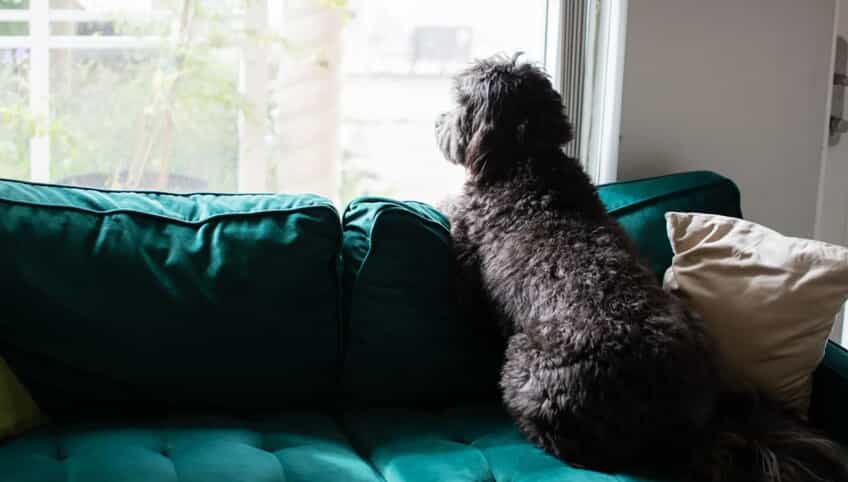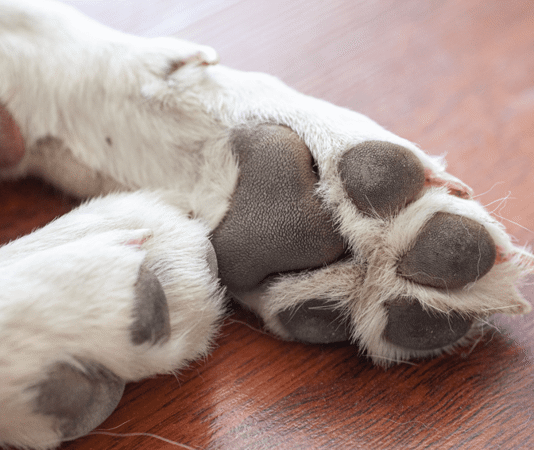As much as we cherish our dogs, life sometimes demands that we leave them alone. While this separation is natural, many dogs struggle with being apart from their owners, developing what's known as separation anxiety.
From destructive chewing to excessive barking, these behaviors can be distressing for pets and their owners. As a pet owner, it's important to understand the causes and symptoms of separation anxiety and how to help your dog cope with it. All American Pet Resorts has some tips and strategies to help you and your pup through this challenging issue.
What Is Separation Anxiety?
Separation anxiety is a condition in which dogs experience excessive stress or fear when they are separated from their owners. It's important to note that not all dogs will develop separation anxiety, but it can affect any breed or age. Some dogs may be more prone to developing it due to genetic factors or past experiences, while others may develop it due to changes in their routine or environment.
Signs of Separation Anxiety in Dogs
Not every dog will exhibit the same signs of separation anxiety, but some common behaviors to look out for include:
Destructive chewing or scratching
Excessive barking or whining
Pacing or restlessness
Accidents in the house (even if they are house-trained)
Escaping attempts such as digging or jumping fences
If you notice any of these behaviors when you leave your dog alone, it's essential to address them and seek help from a professional if needed. Dogs will not simply grow out of separation anxiety on their own.
What Worsens Separation Anxiety in Dogs?
There is usually not one single cause for separation anxiety in dogs, but certain factors can make it worse. These may include:
Overbearing attachment to the owner
Changes in routine or environment
Lack of proper socialization as a puppy
Traumatic experiences during past separations
It's essential to identify any potential triggers or contributing factors and work on addressing them to help ease your dog's separation anxiety.
How to Help a Dog with Separation Anxiety
While it can be hard to watch your dog struggle with separation anxiety, there are several strategies that can help alleviate their stress and make them feel more comfortable when left alone. These may include:
Gradual Desensitization to Being Alone: Simply leaving your dog alone for more extended periods of time can make their anxiety worse. Instead, try gradually increasing the amount of time they are left alone until they become more accustomed to it.
Exercise and Mental Stimulation: A tired and mentally stimulated dog is less likely to experience separation anxiety. Make sure your dog gets enough exercise and engaging activities throughout the day.
Positive Association: Leaving fun toys, treats, or a favorite blanket with your dog while you are away can help them feel more comfortable and occupied. By seeing these items as positive, they may start to view being alone as a good thing.
Establish a Routine: Dogs love routine, and having a predictable daily schedule can help them feel more secure. This includes designated alone time so they know what to expect.
Seek Professional Help: If your dog's separation anxiety is severe, it's important to seek help from a professional trainer or behaviorist who can work with you and your dog on specific techniques and strategies that may be more effective for your individual situation.
With these tips and strategies, you can help your dog manage their separation anxiety and feel more comfortable when left alone.
Does Doggy Daycare Help With Separation Anxiety?
A common question among dog owners is whether doggy daycare can help with separation anxiety. It may seem counterintuitive since you're leaving your dog in a new environment with unfamiliar people. However, for many dogs, regular daycare can be beneficial in managing separation anxiety.
Some reasons why doggy daycare may help include:
Socialization: Dogs are naturally social creatures, and spending time in a group can alleviate their anxiety while providing a comforting sense of companionship.
Supervised Playtime: At daycare, your dog can engage in supervised play with other dogs, which can help expend energy and reduce stress.
Routine and Structure: Daycare centers often have a structured routine that includes designated rest periods. This can give your dog a sense of predictability and structure, which can be calming for some dogs.
It's important to note that not all dogs will benefit from daycare in managing separation anxiety. If your dog has severe anxiety or is not comfortable in a group setting, it may not be the best option for them. It's always important to assess your individual dog's needs and comfort level before enrolling them in daycare.
There's Hope for Dogs with Separation Anxiety
Separation anxiety can be challenging for dogs and their owners, but with patience, understanding, and the right strategies, it can be managed. Whether through gradual desensitization or seeking professional help, there are solutions that can help your dog feel more comfortable when left alone.
For some dogs, regular daycare may even provide them with the social interaction and structure they need to thrive. With All American Pet Resorts, you have a friend in the daycare business who is dedicated to providing a safe and nurturing environment for your furry companion. With plenty of room to play and love and attention, our daycare can be a great option for dogs struggling with separation anxiety.
Discover how All American Pet Resorts can provide a comfortable, stress-free environment for your dog while you're away. Find your local dog daycare today to learn more!




